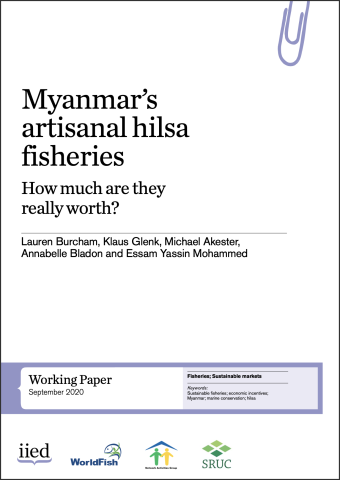
Current national statistics do not capture the true value of Myanmar’s hilsa fisheries. As a result, investment in the sustainable and inclusive management of its artisanal hilsa fisheries is limited. This study estimates the economic value of artisanal hilsa fisheries in Myanmar, using artisanal income data to estimate use value and a benefit transfer to estimate non-use value. Over ten years, implementation of an incentive scheme that compensates artisanal fishers for compliance with new fishing regulations could yield a net benefit of between US$790.4 million and $1.1 billion, with benefits outweighing costs by up to around nine times. These benefits include an annual 5% increase in the income of artisanal fishers and maintenance of the existence value placed on hilsa by the wider population. While this approximation of benefits compared with costs is rough, it clearly demonstrates that an incentive scheme would be an economically rewarding management option.






